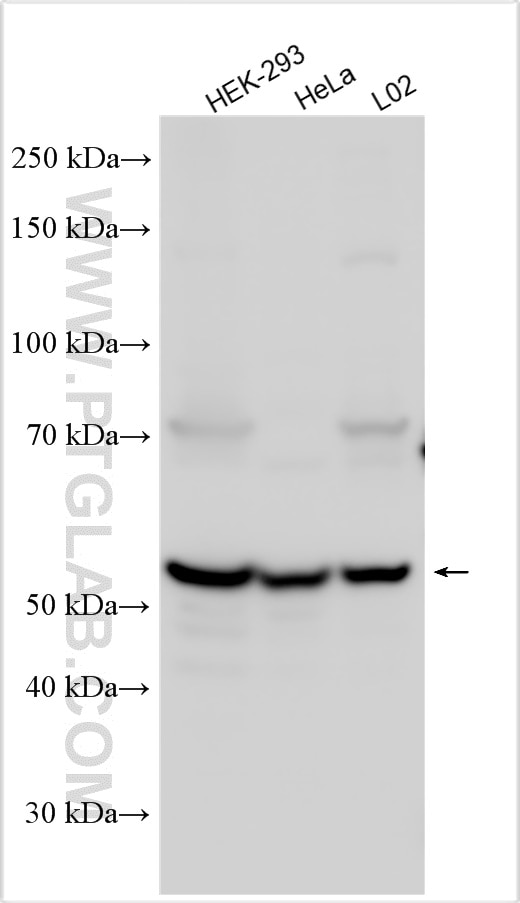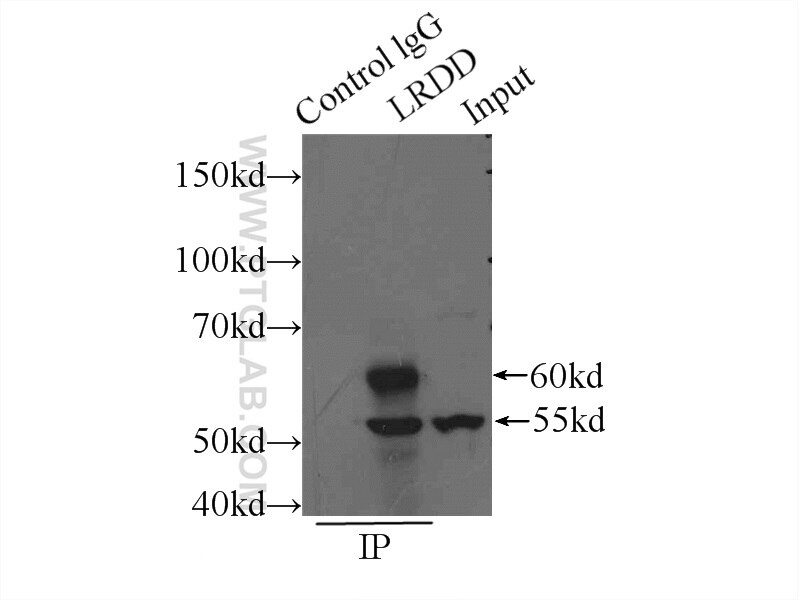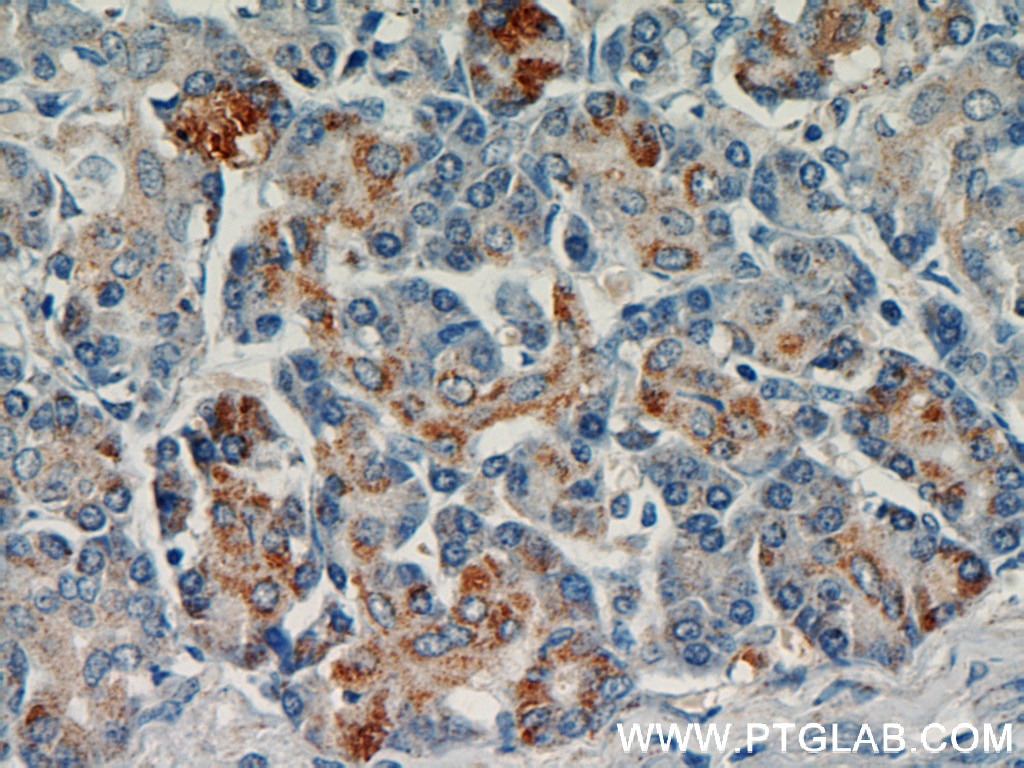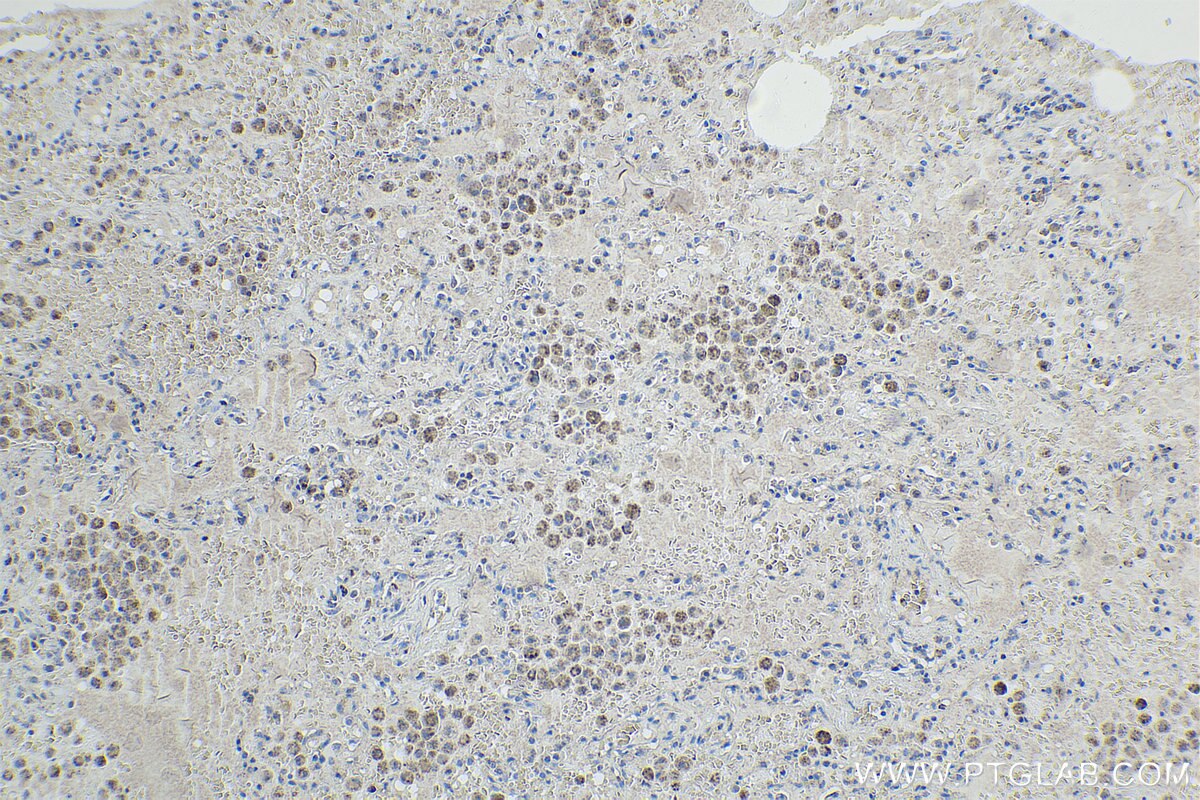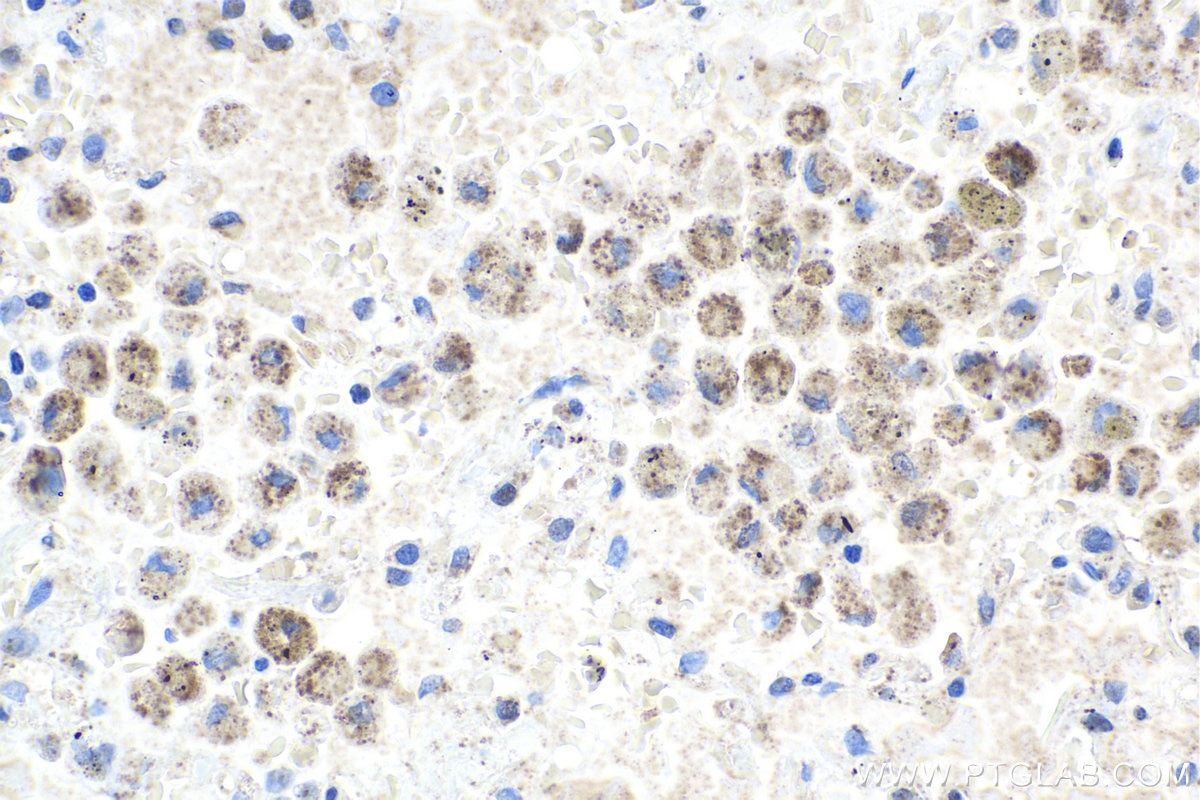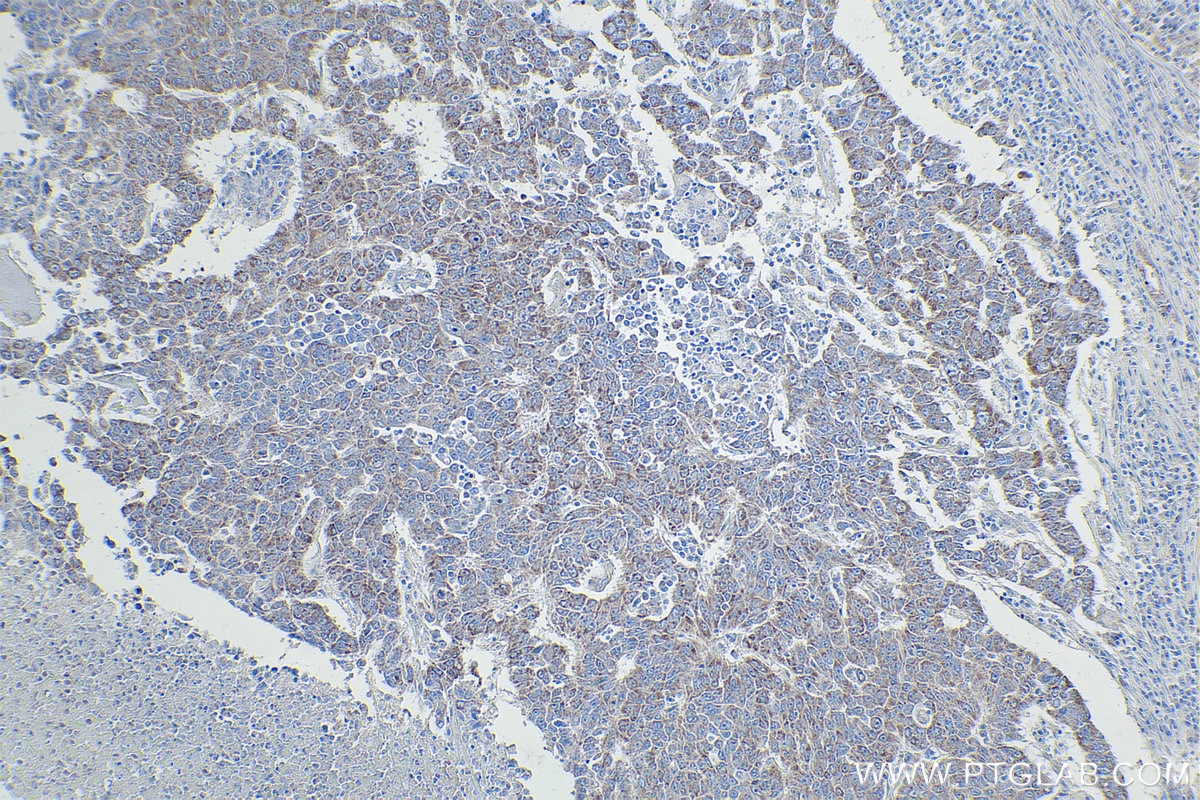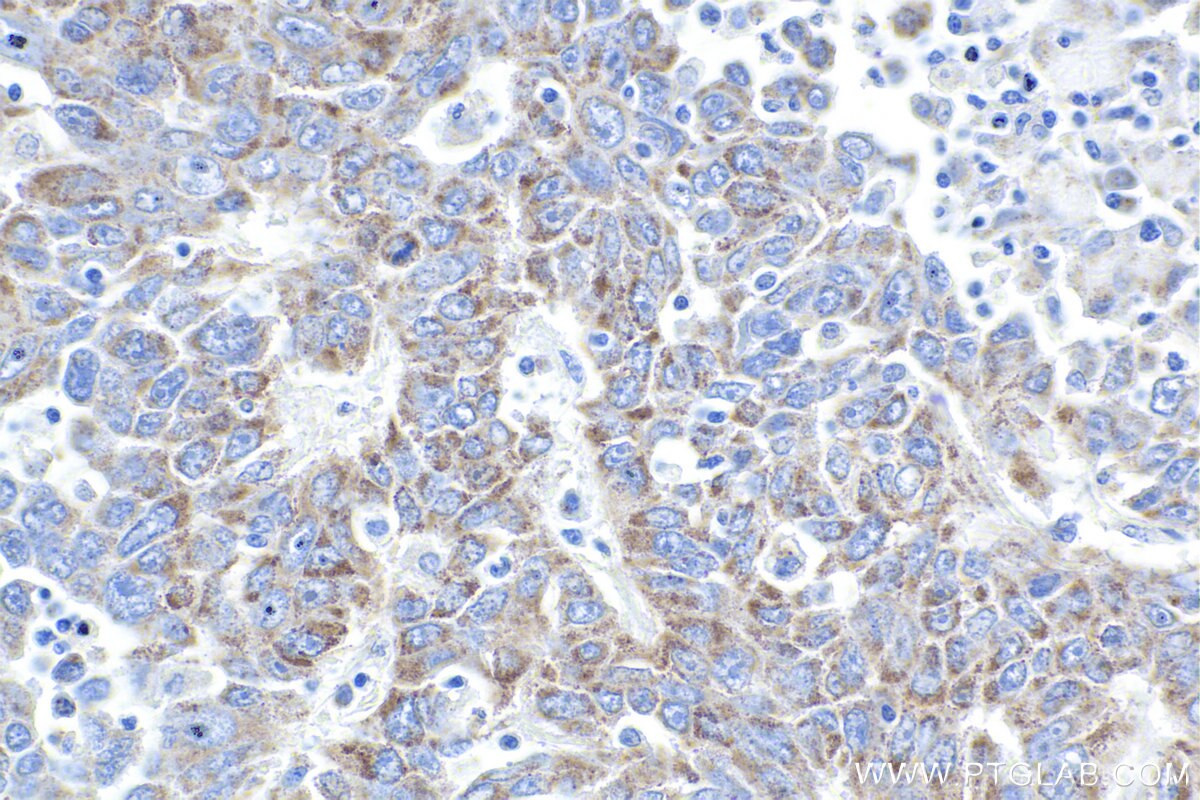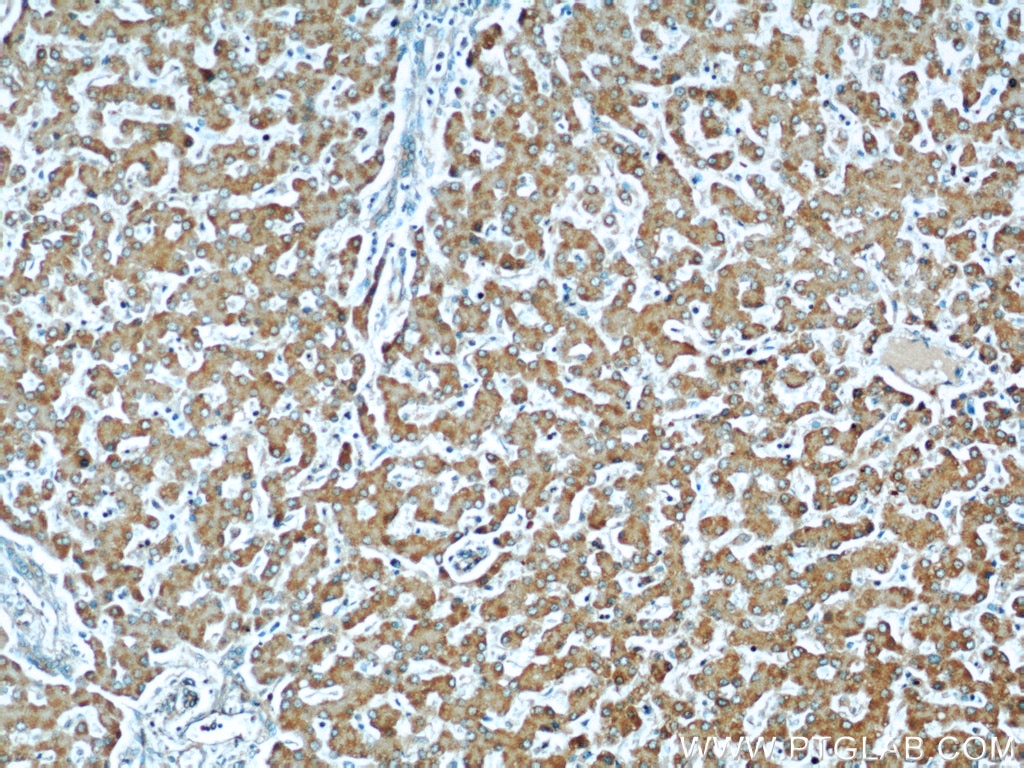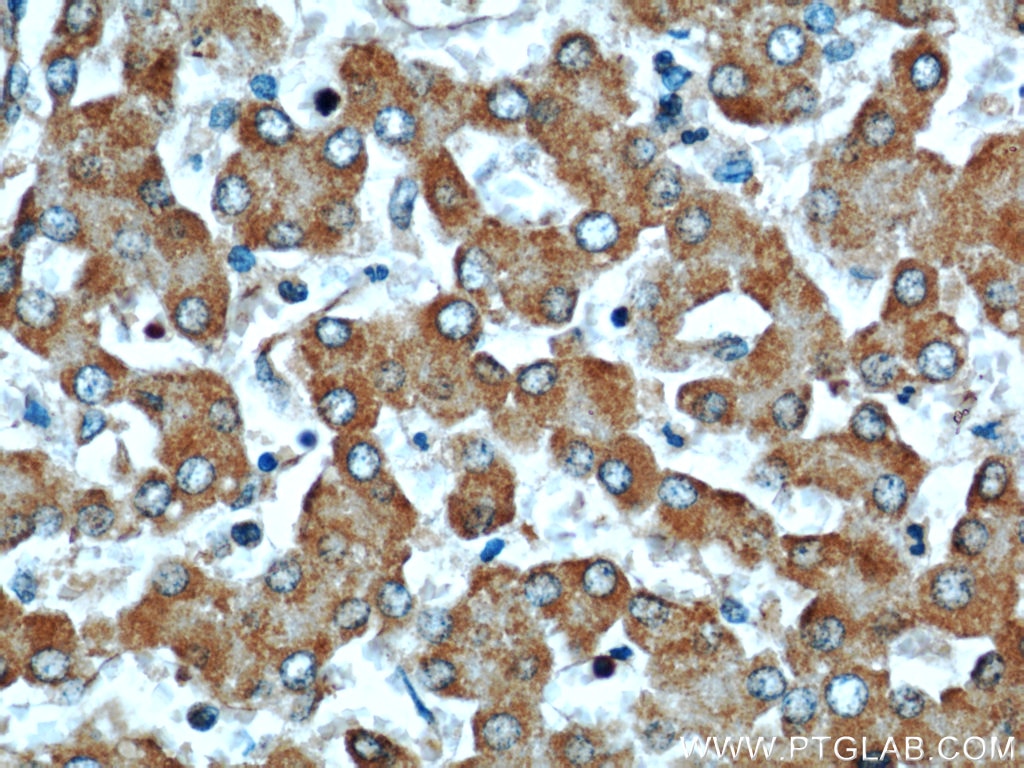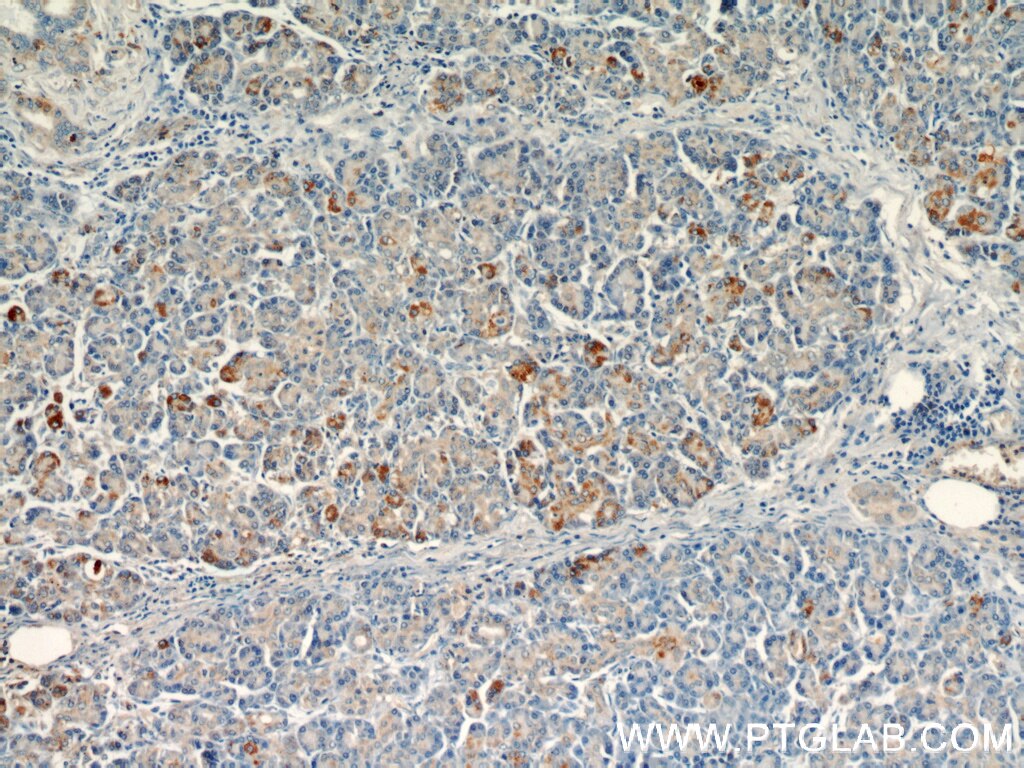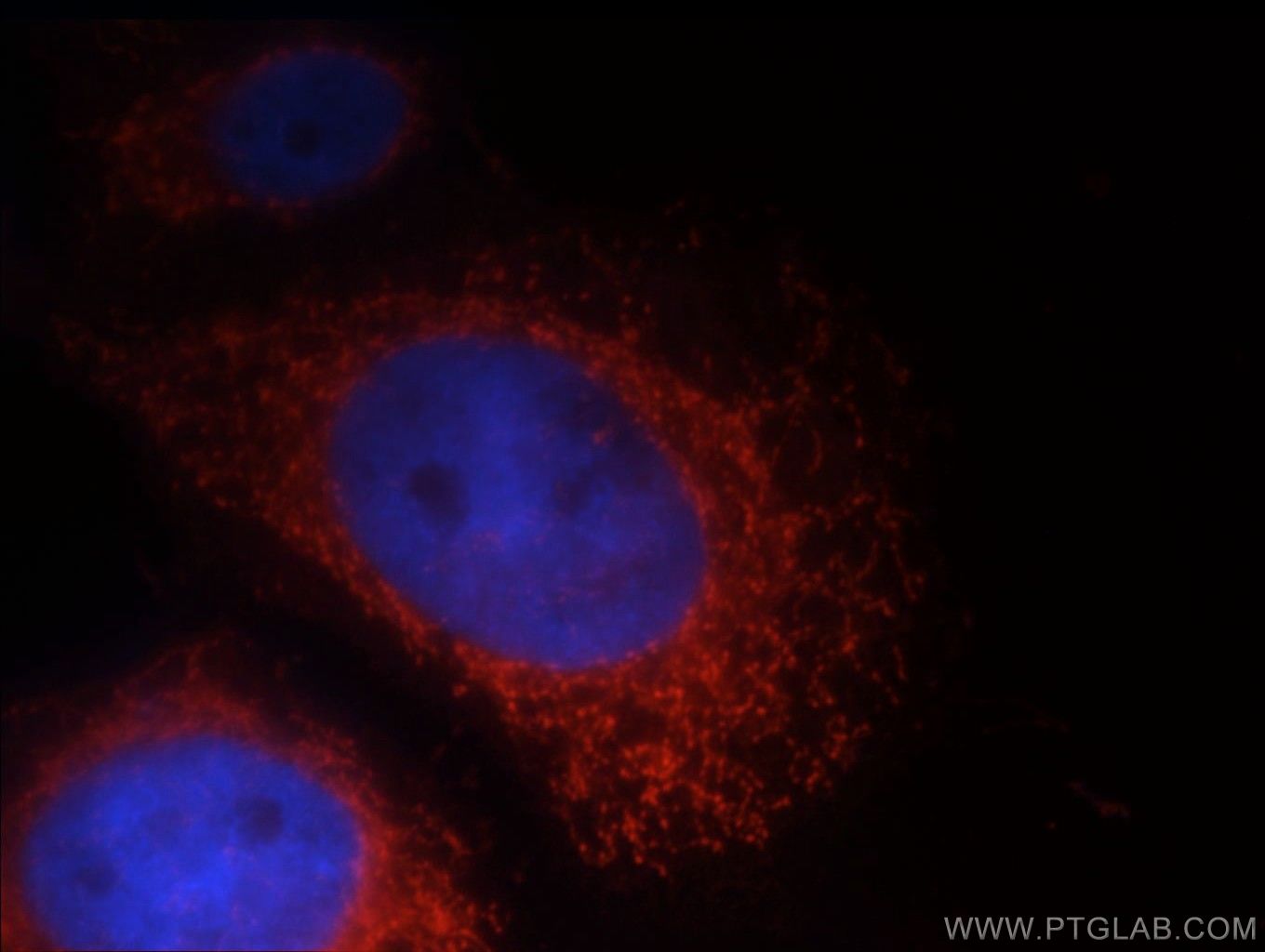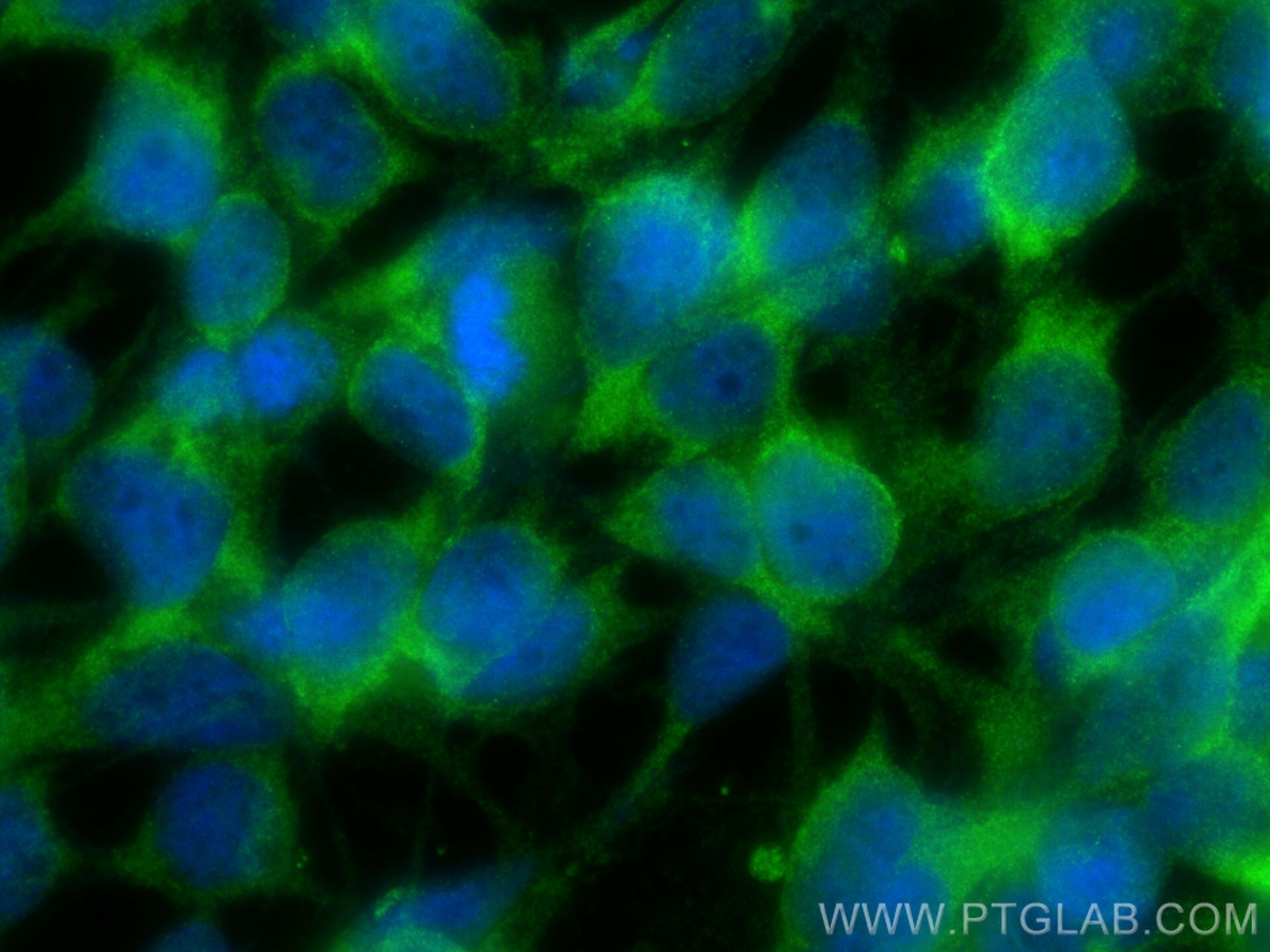Anticorps Polyclonal de lapin anti-LRDD
LRDD Polyclonal Antibody for WB, IHC, IF/ICC, IP, ELISA
Hôte / Isotype
Lapin / IgG
Réactivité testée
Humain, rat, souris
Applications
WB, IHC, IF/ICC, IP, ELISA
Conjugaison
Non conjugué
N° de cat : 12119-1-AP
Synonymes
Galerie de données de validation
Applications testées
| Résultats positifs en WB | cellules HEK-293, cellules HeLa, cellules L02 |
| Résultats positifs en IP | cellules L02 |
| Résultats positifs en IHC | tissu pulmonaire humain, tissu de cancer du poumon humain, tissu hépatique humain, tissu pancréatique humain il est suggéré de démasquer l'antigène avec un tampon de TE buffer pH 9.0; (*) À défaut, 'le démasquage de l'antigène peut être 'effectué avec un tampon citrate pH 6,0. |
| Résultats positifs en IF/ICC | cellules HEK-293, cellules HeLa |
Dilution recommandée
| Application | Dilution |
|---|---|
| Western Blot (WB) | WB : 1:500-1:1000 |
| Immunoprécipitation (IP) | IP : 0.5-4.0 ug for 1.0-3.0 mg of total protein lysate |
| Immunohistochimie (IHC) | IHC : 1:250-1:1000 |
| Immunofluorescence (IF)/ICC | IF/ICC : 1:200-1:800 |
| It is recommended that this reagent should be titrated in each testing system to obtain optimal results. | |
| Sample-dependent, check data in validation data gallery | |
Applications publiées
| WB | See 2 publications below |
Informations sur le produit
12119-1-AP cible LRDD dans les applications de WB, IHC, IF/ICC, IP, ELISA et montre une réactivité avec des échantillons Humain, rat, souris
| Réactivité | Humain, rat, souris |
| Réactivité citée | souris |
| Hôte / Isotype | Lapin / IgG |
| Clonalité | Polyclonal |
| Type | Anticorps |
| Immunogène | LRDD Protéine recombinante Ag2761 |
| Nom complet | leucine-rich repeats and death domain containing |
| Masse moléculaire calculée | 893 aa, 98 kDa |
| Poids moléculaire observé | 55 kDa |
| Numéro d’acquisition GenBank | BC014904 |
| Symbole du gène | LRDD |
| Identification du gène (NCBI) | 55367 |
| Conjugaison | Non conjugué |
| Forme | Liquide |
| Méthode de purification | Purification par affinité contre l'antigène |
| Tampon de stockage | PBS with 0.02% sodium azide and 50% glycerol |
| Conditions de stockage | Stocker à -20°C. Stable pendant un an après l'expédition. L'aliquotage n'est pas nécessaire pour le stockage à -20oC Les 20ul contiennent 0,1% de BSA. |
Informations générales
P53-induced protein with a death domain (PIDD/LRDD) is a component of the PIDDosome. PIDD contains 910 residues with 7 leucine rich repeats (LRRs), 2 ZU-5 domains and a C-terminal death domain (DD). PIDD can be cleaved into shorter fragments generating a PIDD-N fragment of 48 kD (residues 1-446), a PIDD-C fragment of 51 kD (residues 447-910) and a PIDD-CC fragment of 37 kD (residues 589-910). Auto-cleavage of PIDD determines the downstream signaling events. The PIDD-C fragment mediates activation of NFκB via the recruitment of RIP1 and NEMO, while PIDD-CC causes caspase-2 activation, which leads to apoptosis.
Protocole
| Product Specific Protocols | |
|---|---|
| WB protocol for LRDD antibody 12119-1-AP | Download protocol |
| IHC protocol for LRDD antibody 12119-1-AP | Download protocol |
| IF protocol for LRDD antibody 12119-1-AP | Download protocol |
| IP protocol for LRDD antibody 12119-1-AP | Download protocol |
| Standard Protocols | |
|---|---|
| Click here to view our Standard Protocols |
Publications
| Species | Application | Title |
|---|---|---|
Neural Regen Res Neat1 decreases neuronal apoptosis after oxygen and glucose deprivation. | ||
Exp Neurol Microglia aggravate white matter injury via C3/C3aR pathway after experimental subarachnoid hemorrhage |
